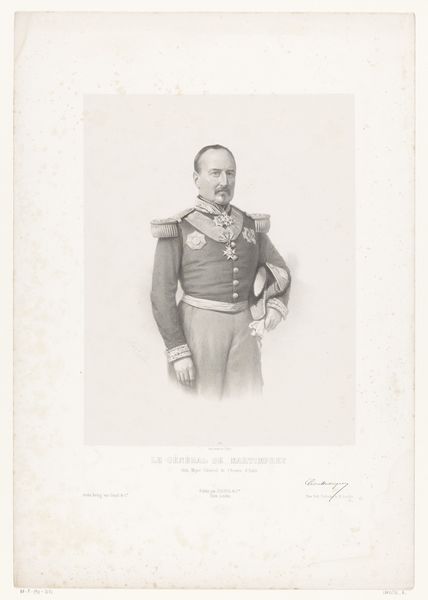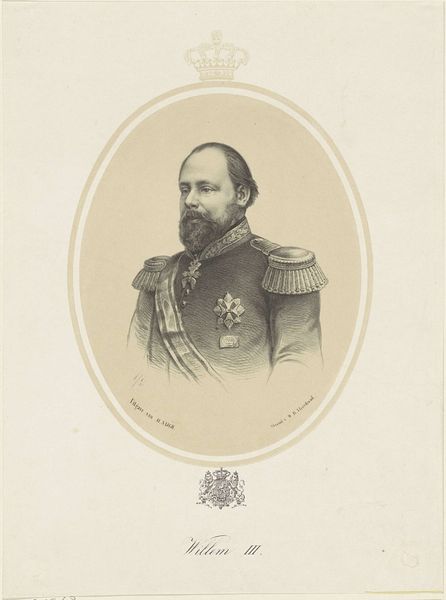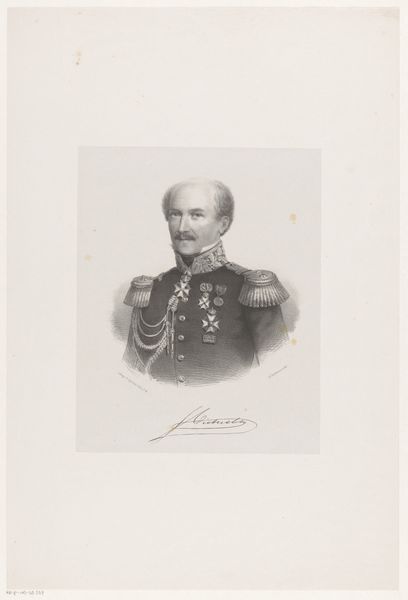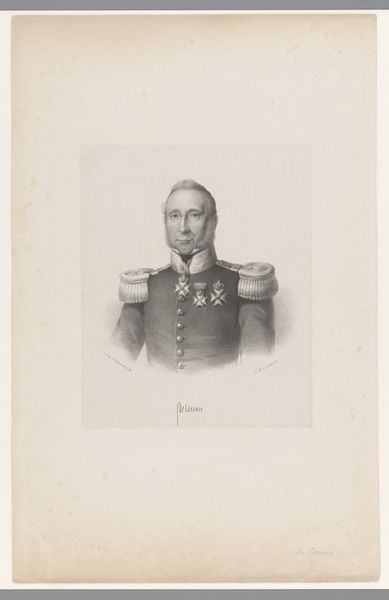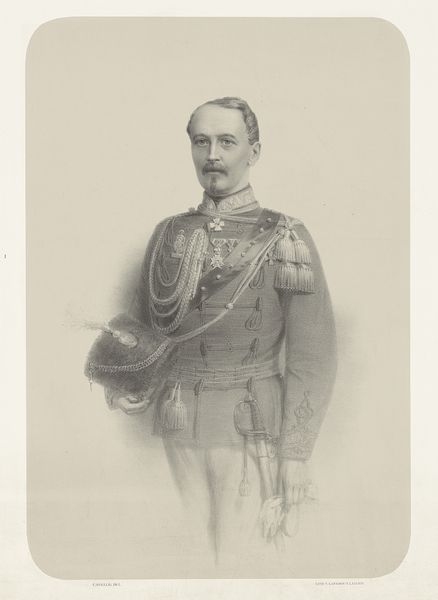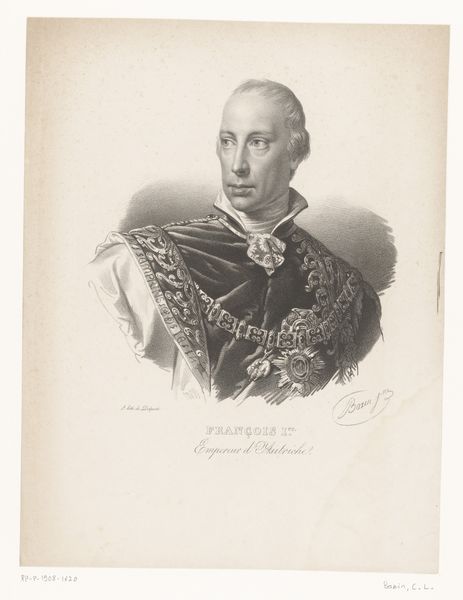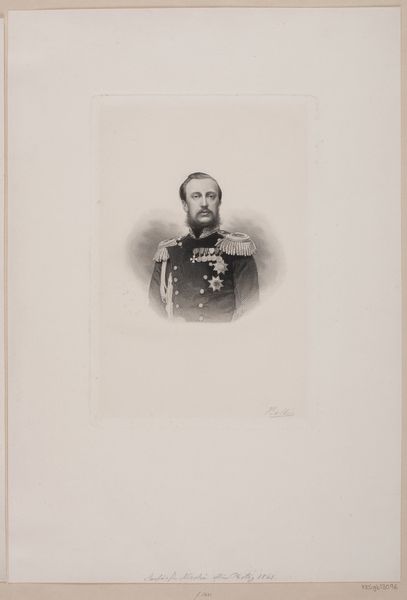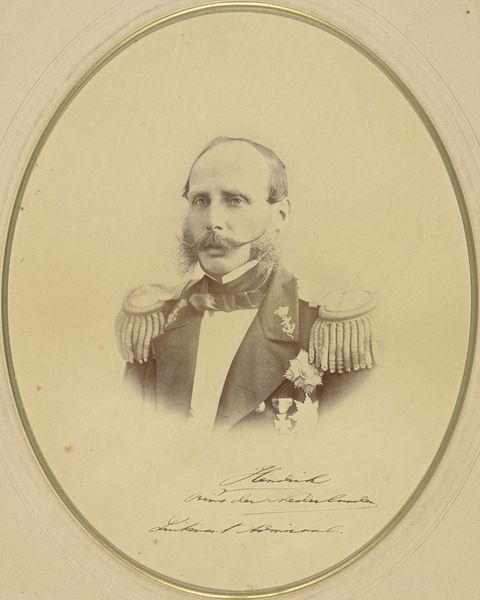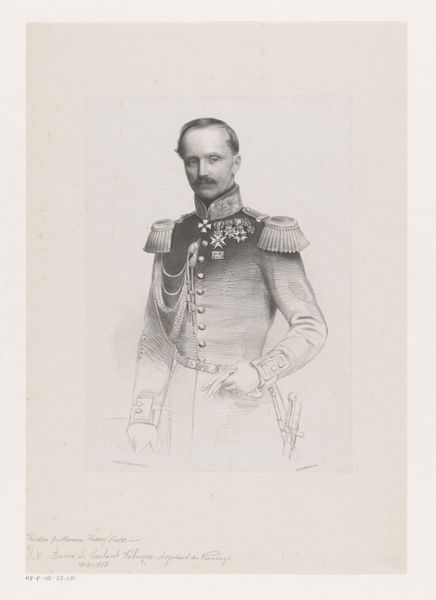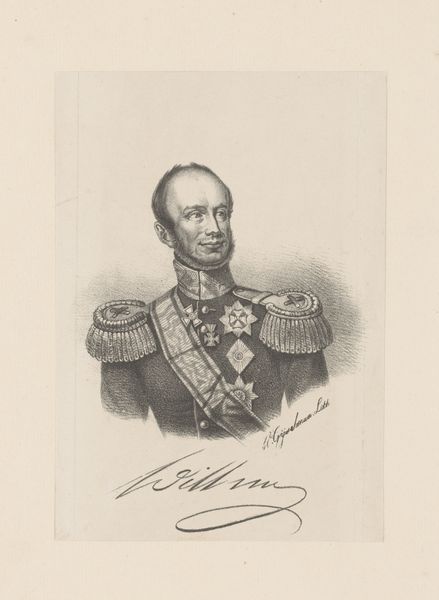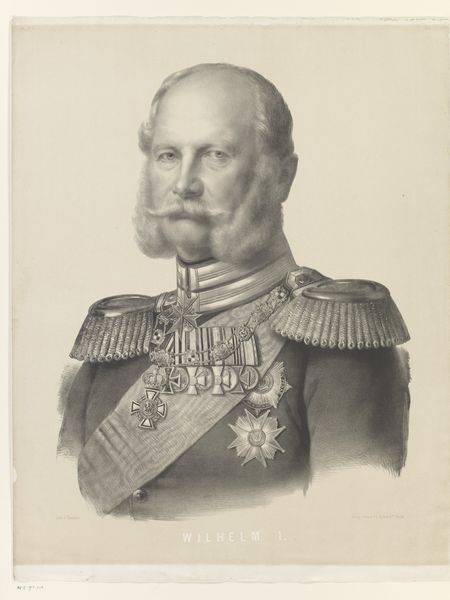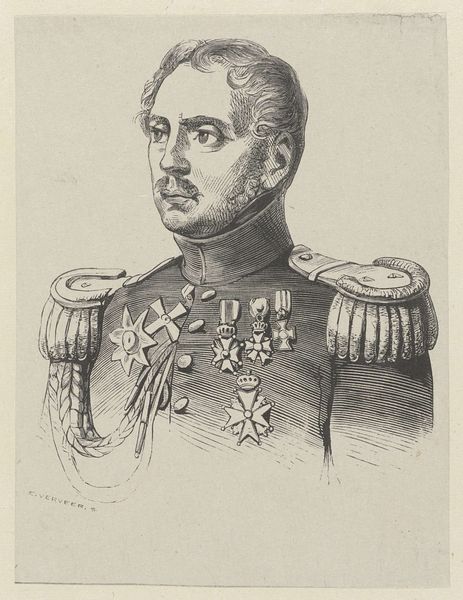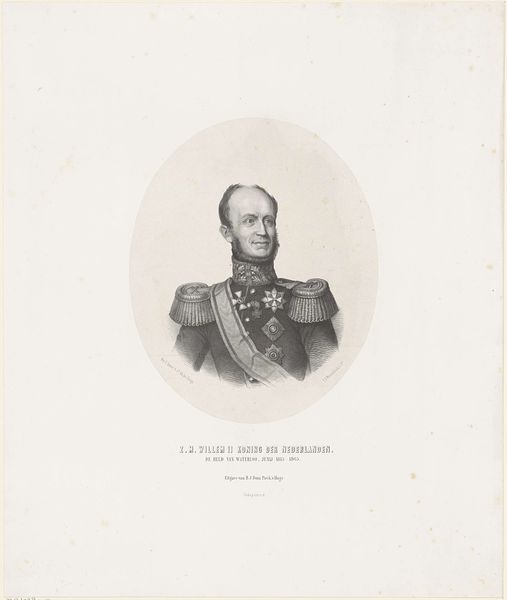
drawing, print, engraving
#
portrait
#
drawing
# print
#
historical photography
#
19th century
#
academic-art
#
engraving
#
realism
Dimensions: height 488 mm, width 366 mm
Copyright: Rijks Museum: Open Domain
Curator: Here we have a print entitled "Portret van Hendrik, prins der Nederlanden," dating to before 1903. It's an engraving currently held in the Rijksmuseum collection. Editor: My first impression is the weight of formality. He seems encased in layers of representation—uniform, medals, and that incredibly sculpted facial hair! Curator: Exactly! Consider the social context in which such portraits were produced. They weren't merely likenesses; they were tools for solidifying power. An engraving like this, reproduced and distributed, could shape public perception. What kind of statement did those ornate shoulder pieces send, in terms of material wealth? What does it tell us about the relationship between the working class and royal status at the time? Editor: From a material perspective, engraving allows for meticulous detail and reproducibility. The labour involved, from the artist to the printer, speaks volumes. We often forget about the industrial aspects inherent in artwork production when talking about art history. Consider the types of paper, the inks utilized to produce the piece. It could offer insight into the means and consumption of visual imagery in Dutch society at the time. Curator: I wonder about Hendrik himself. He appears a product of his time, constrained by social expectations. This engraving acts as a stage, forcing his role. What alternatives were available, especially considering his position and the need to protect and reproduce that position for the Netherlands? Editor: His identity seems thoroughly manufactured and delivered through reproducible formats and in many examples; as such it makes me question agency, especially across identity boundaries. Consider issues surrounding visibility of working classes during the era. Where does individual expression genuinely exist within the rigid hierarchies depicted, not just for him, but the artist as well? Curator: This work, more than anything, illustrates the labor inherent not just in creation, but also in performance, both artistic and regal. Thanks to the chosen means of creation, an individual expression morphs into social product. Editor: Indeed. It's fascinating to view the print as a kind of artifact that allows discussions on not just about art or the figure within, but class and material practice.
Comments
No comments
Be the first to comment and join the conversation on the ultimate creative platform.
